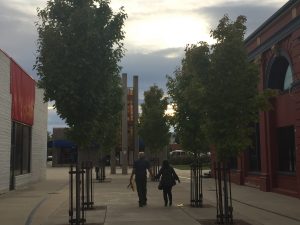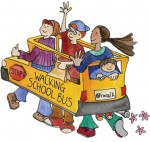1:39 PM PDT on May 25, 2023
For over ten years, Shasta Living Streets, a community-based organization in Redding led by director Anne Wallach Thomas, has been working towards building a bike hub near the bus and train hub in downtown. The vision was to create a public gathering spot and bike resource center in downtown Redding, close to affordable housing, bus and train access, and to the popular bike paths along the Sacramento River.
On May 12, that vision became a reality with the launching of the new Redding Bike Depot, which includes a station for the city’s new electric bike-share system, secure indoor bike parking, and office space for Shasta Living Streets, which will support and manage the bike-share system. The Depot also shares an outdoor space with a restaurant/bistro, planned for a summertime opening. This new bike hub will give Shasta Living Streets a center from which to provide route advice and assistance to bike-share system users as well as other local riders and tourists who come to check out the city’s amenities.
Thomas laid the groundwork for years, talking up her vision of what could be with city and regional planners, local residents, and anyone and everyone who would listen. She helped build relationships among them and convinced the local McConnell Foundation to support her vision. She worked with the local Caltrans district office, which maintains an office nearby, to overcome barriers to making changes on the many state highways that crisscross Redding. All along she and her team were talking to local residents about what they wanted and needed in the area.
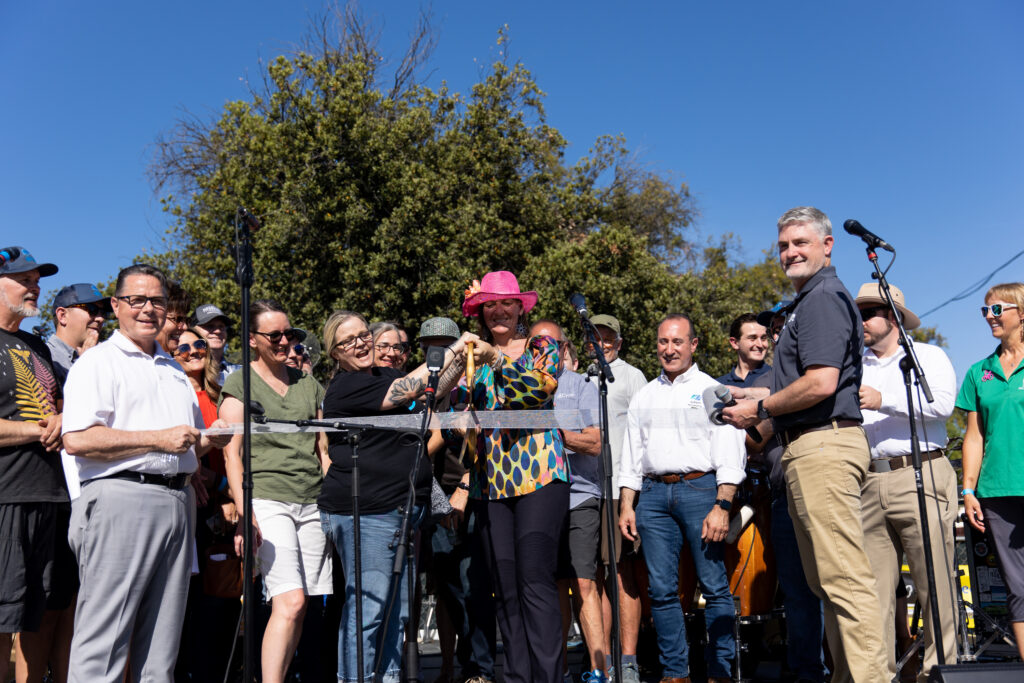
A lot of work went into that preplanning, but what really brought it together was when Redding started winning grants. The city has received two from the state’s cap-and-trade-funded Affordable Housing and Sustainable Communities (AHSC) program. That program requires collaboration between distinct and disparate agencies and groups – like housing developers and transit agencies – to create “out-of-the-box” housing and transportation solutions. The city of Redding received its first $15 million AHSC grant for Market Center, a housing development in downtown that has already completed buildings with affordable and market-rate units. Part of that grant also helped fund the bike-share system, and some will be used for protected bike lanes planned for California Street going past the Shasta Bike Depot. The local Caltrans District 2 also secured $2.8 million from the federal Infrastructure Investment and Jobs Act (IIJA) to augment that funding.
Redding got a second $20 million AHSC grant for another project in the same area that includes more affordable housing within a three-block-long mixed-use project along California Street. According to Lynn von Koch-Liebert, Executive Director of the Strategic Growth Council, Redding is the only city that has received AHSC grants for two projects that close to each other. About half of that second grant is earmarked for transportation, and it helped construct the Bike Depot, supply bus passes for residents of the low-income units, and build another two miles of protected bike lanes from Turtle Bay into the downtown area.
Redding Bikeshare also got a separate grant from Clean Mobility Options, another cap-and-trade-funded program, to cover some staff and equipment.
Meanwhile the City of Redding applied for and won two separate Active Transportation Program grants, which have helped plan and build two segments of protected bike lanes in town. The city has already built the Diestelhorst-to-Downtown Loop, which connects the Bike Depot to the Sacramento River along a former roadway. The other segment, from Highway 44 to the Sundial Bridge, is still in the planning stage.
The Shasta Bike Hub is located in a brick building that – rumor has it – used to be a brothel, but had been sitting empty for years at the far end of a parking lot dedicated to the bus and train depots. Its entrance, on California street, faces the intersection of two busy one-way roads – a once-common “traffic solution” that devastated this part of downtown and made walking and biking here annoying and dangerous.
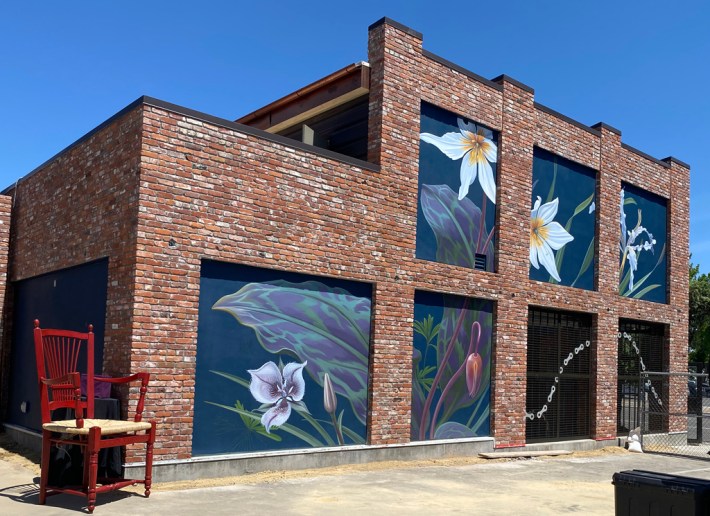
Nearby is a former pedestrian mall that has been redesigned as a quiet part of the street grid, in conjunction with the housing projects. Redding was one of the California cities that, like Fresno, created an outdoor pedestrian mall in its downtown in the 1960s, only to later watch it wither as large shopping centers surrounded by oceans of parking were built on the city’s outskirts. Meanwhile the streets in the downtown core were converted to fast one-way couplets to rush drivers through on their way to and from the nearby freeways. Redding’s former pedestrian mall, along Market Street, now allows cars, but its design makes it clear that cars are guests and drivers must proceed slowly through the space.
What was a traffic sewer in all directions, with cars coming off the highway and cutting through downtown on state highways that served as main streets, is slowly converting into a safer and calmer public space that people might want to hang out in, with more housing and very accessible bus, train, and bike connections.

Given the way the Bike Depot connects these many separate project pieces, and given the profound overall impact it has had on this somewhat neglected area of downtown, it’s no surprise they took a whole day to celebrate.
The day before the launch, workers scrambled to install bike racks and clear out their equipment. San Francisco-based artist Mona Caron, whose murals about history, place, and plants grace buildings around the world, added a few finishing touches to her mural of local native iris and lilies spanning the side of the Bike Depot building.
On the day of the celebration, it was bright and hot, and the combination indoor/outdoor space at the Depot provided welcome cool shade. The launch of Redding’s new bike-share system, which includes a fleet of seventy pedal-assist e-bikes, meant that e-bikes were available for test rides as well as tours of the numerous new and future bike facilities.
Numerous state, regional, and city leaders joined in the celebration. Caltrans’ California Walk and Bike Technical Advisory Committee was meeting in District 2 that day, and city and regional planners, the new director of Redding’s bus agency, and state agency heads took an e-bike tour to learn about the kinds of challenges and strategies the city is deploying.
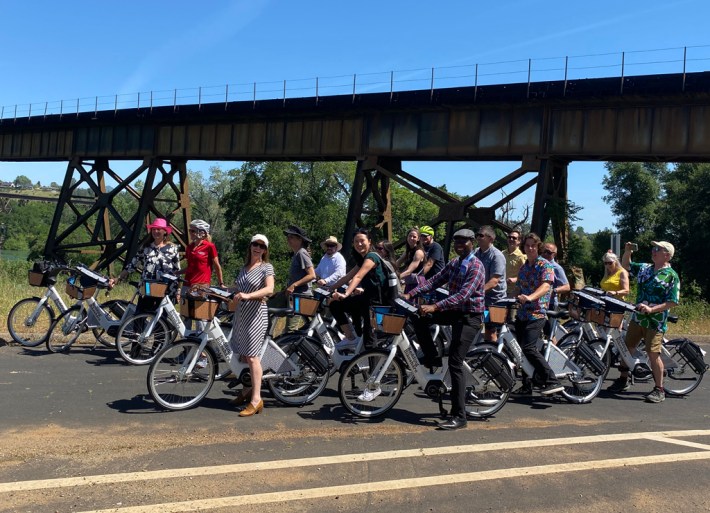
For example, City of Redding Transportation Planner Zach Bonnin told the group about one creative solution to a problem that cropped up with building a bike connection to the river from downtown. The route had to go under an active train trestle that crossed the river, and the railroad company insisted that a new bike lane would have to go through a tunnel – that the city would have to build. It would have been prohibitively expensive, not to mention a potentially unpleasant ride. Instead, the city converted a narrow road where they already owned the right-of-way to a bike and pedestrian path. Solved.

Caltrans Director Tony Tavares was one of the leaders who came to Redding for the celebration. He told the crowd gathered that evening that Caltrans is working “to provide more bike routes, more pedestrian safety, and more access and options for people to use instead of getting in your vehicle.”
“Almost every vehicle trip in Shasta county is less than five miles,” he said. “That is perfect for an e-bike ride. Most of your trips can be done by bike. And we are putting bike safety first at Caltrans.”
He also said that Caltrans has just released two important road safety plans. One, the statewide Road Safety Action Plan, “details everything we want to do with complete streets, and with providing more active transportation in communities just like here in Redding,” according to Director Tavares.
Second, Caltrans’ Design Information Bulletin on Complete Streets, which Tavares said “is available for public comment,” will be a guide for defining and designing safe streets for all, especially along those state highways that serve as main streets for so many cities. It’s not actually up on the Caltrans site yet, but is being finalized and should be posted in late June or early July, according to Caltrans media relations manager William Arnold.
“We worked with many groups, including advocates, planners and engineers, to develop good design guidance for how to make these facilities more complete and more safe, and to ensure more people get out of vehicles and use other modes,” said Tavares at the event, to rousing applause.
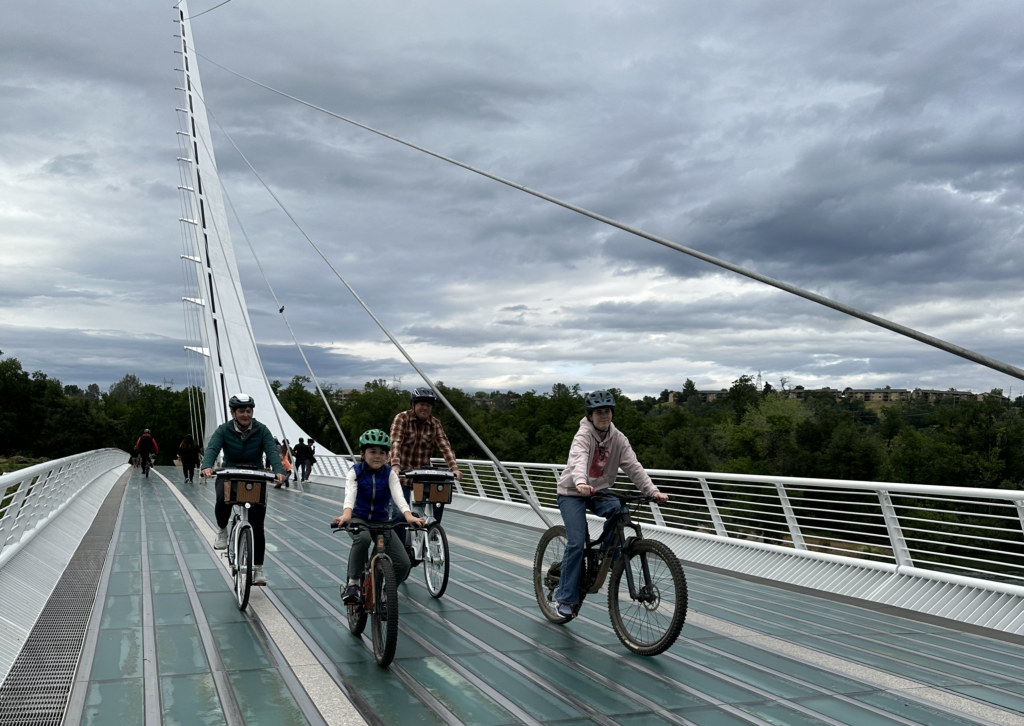
Redding’s promise as a bike-friendly place is taking shape. From the new Bike Depot, it’s a quiet, easy ride to the river, under that old train trestle and over a historic bridge that used to be a car connection over the river but is now open only to pedestrians and bike riders. From there one can ride up to mountain biking areas to the northwest, where snow still graces the Trinity Alps. There’s also a bucolic ride along the river to the Sundial Bridge at Turtle Bay, or one can also just post up on a bench in the deep shade and watch the river burble past.
Read the article on Streetsblog California here.
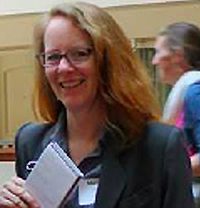
Streetsblog California editor Melanie Curry has been thinking about transportation, and how to improve conditions for bicyclists, since her early days commuting by bike to UCLA long ago. She was Managing Editor at the East Bay Express, and edited Access Magazine for the University of California Transportation Center. She also earned her Masters in City Planning from UC Berkeley.

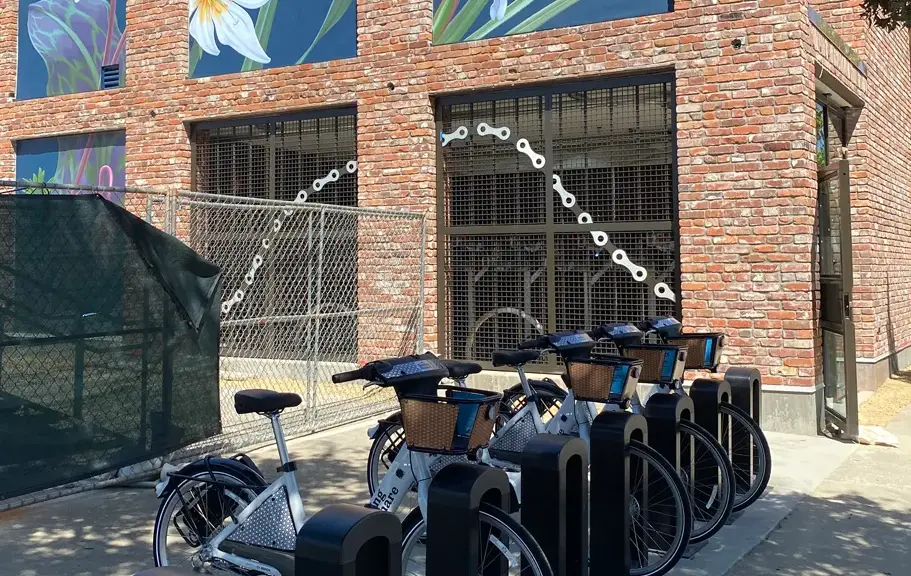
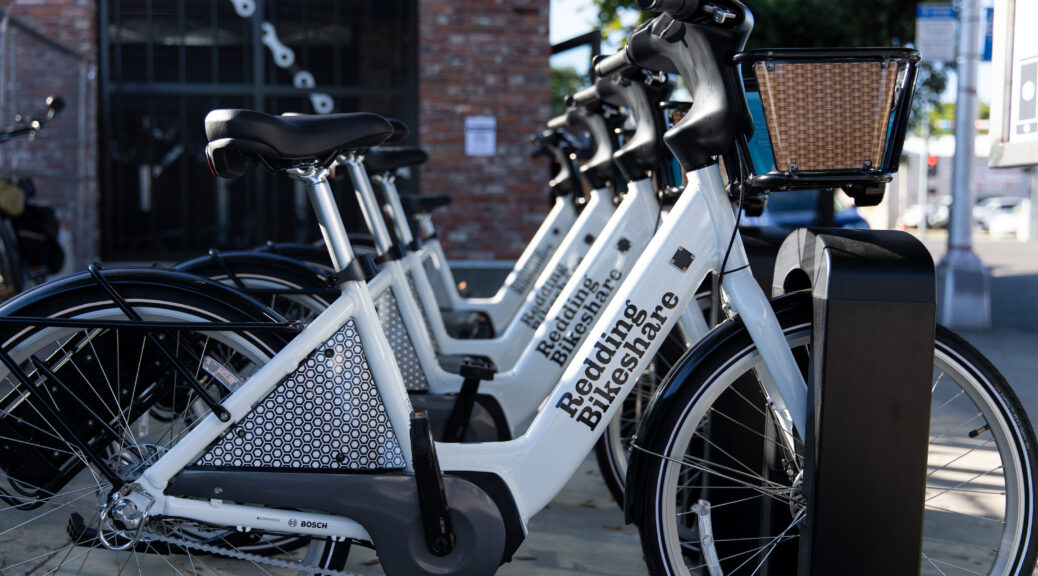




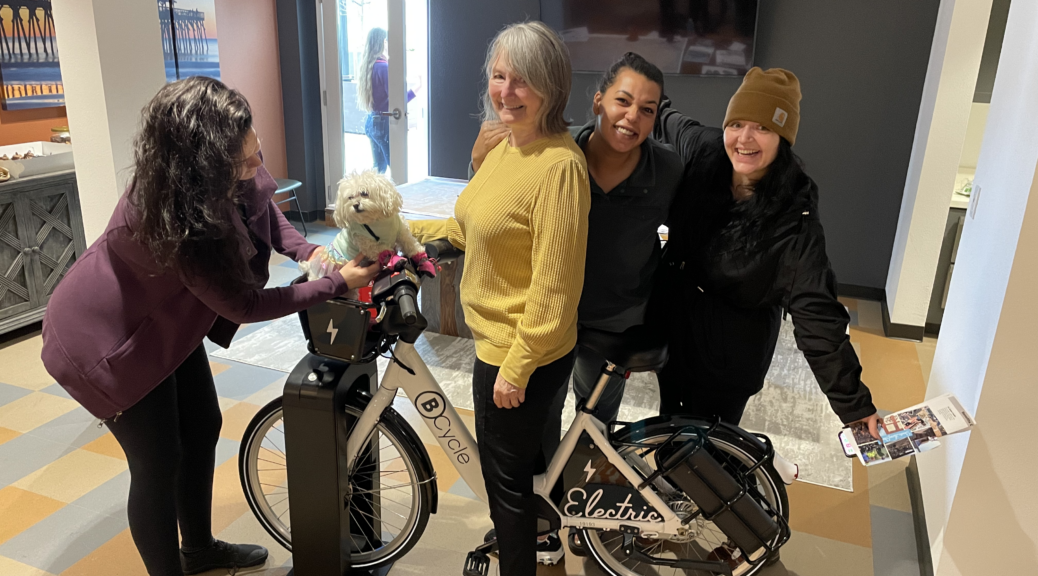
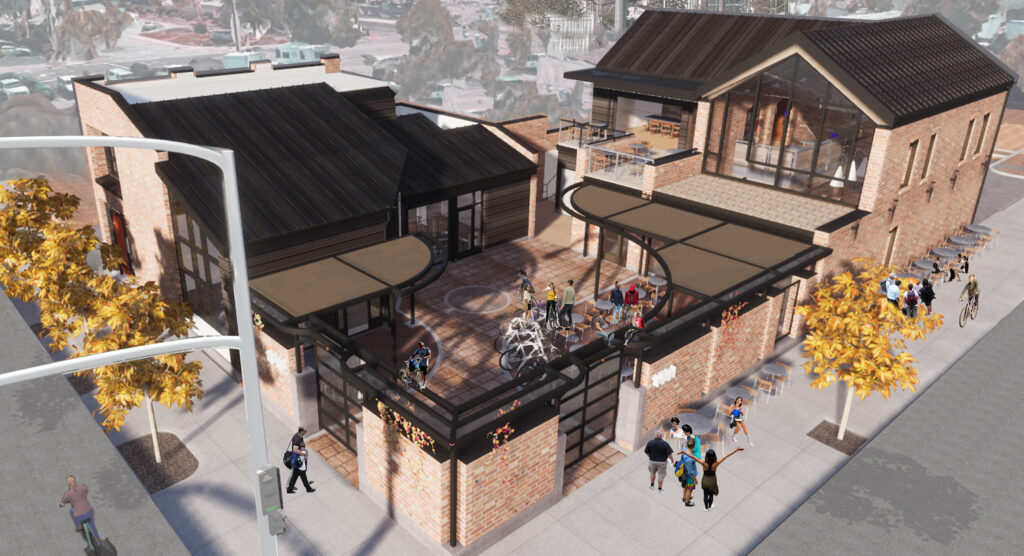
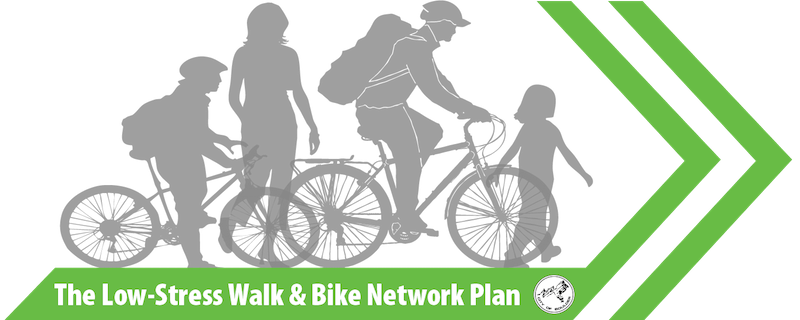
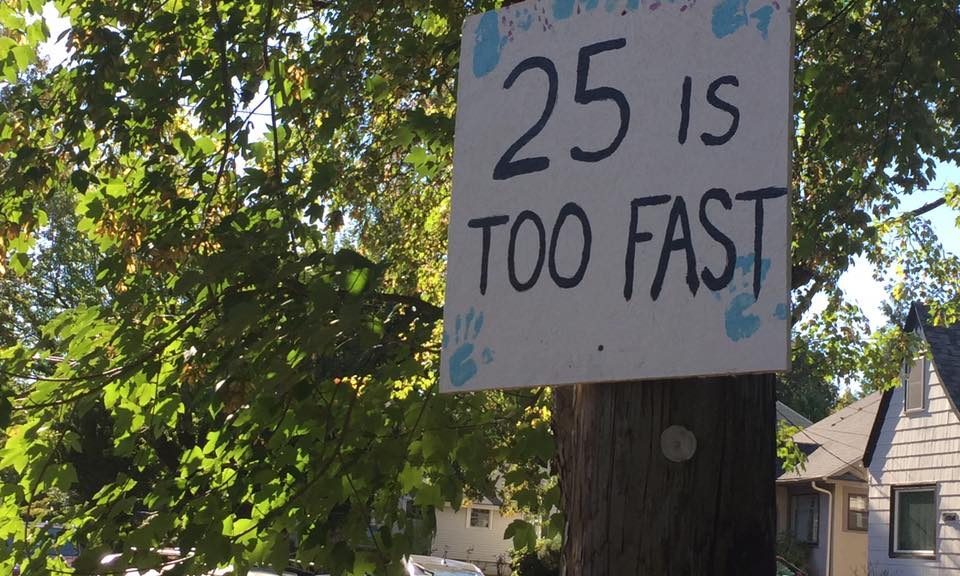
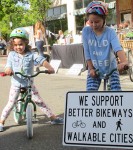
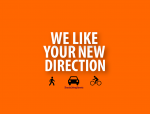
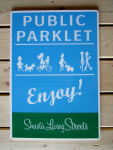
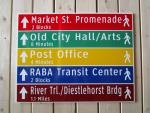
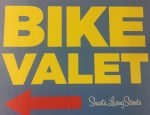
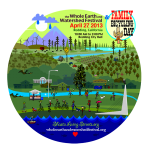
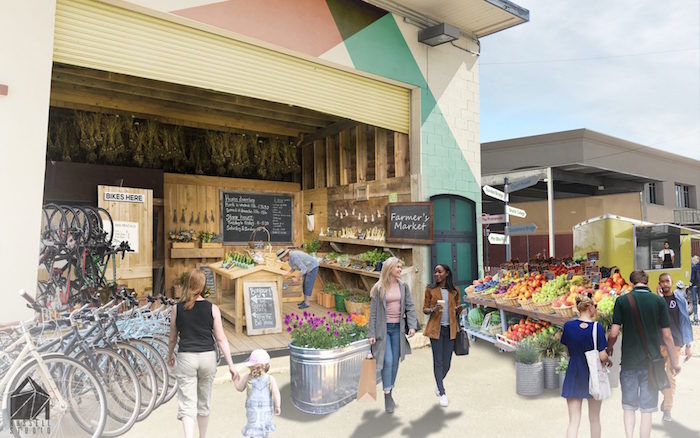
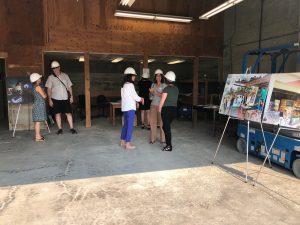
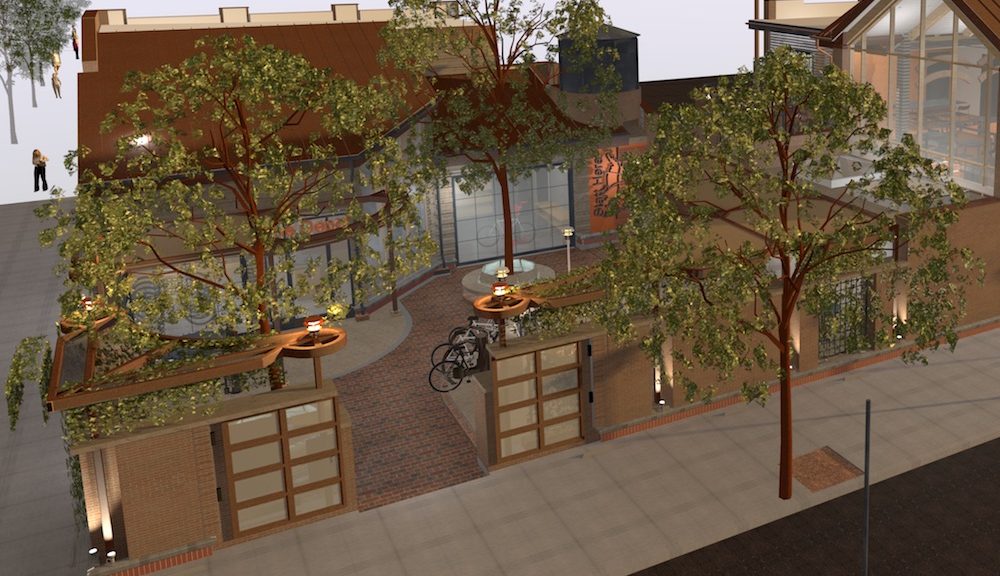
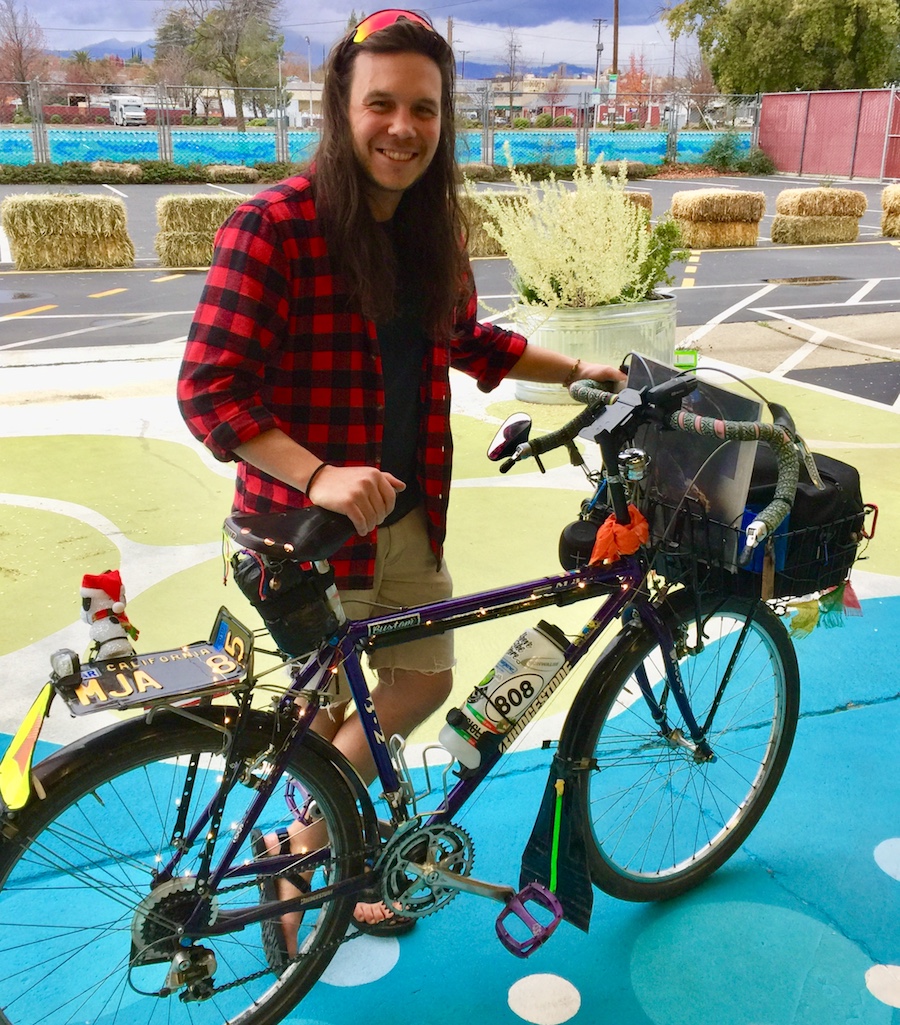
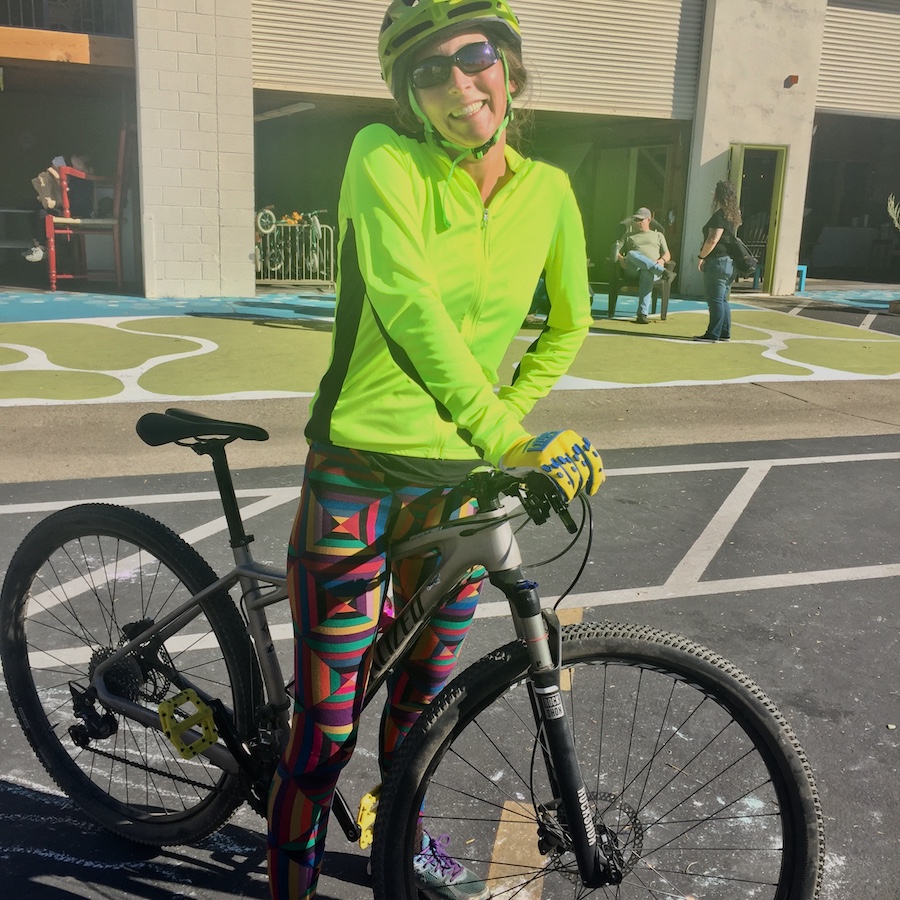
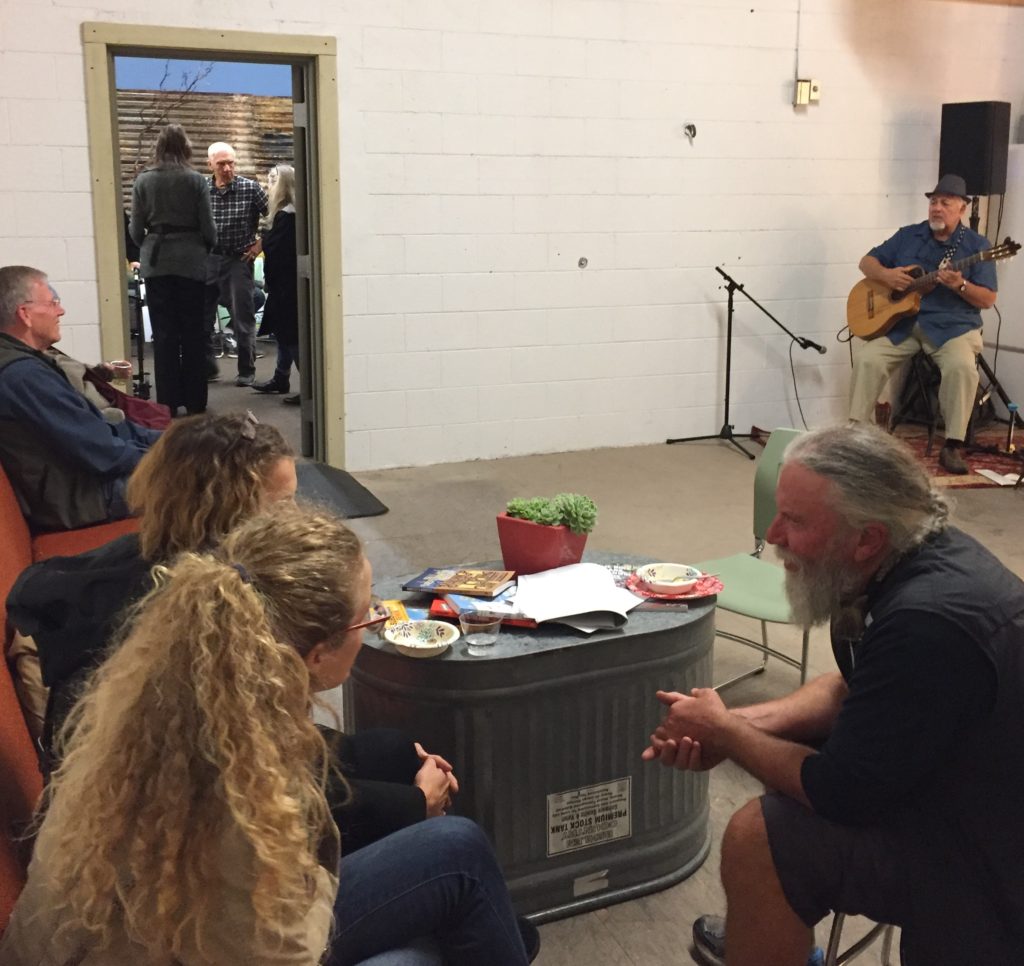
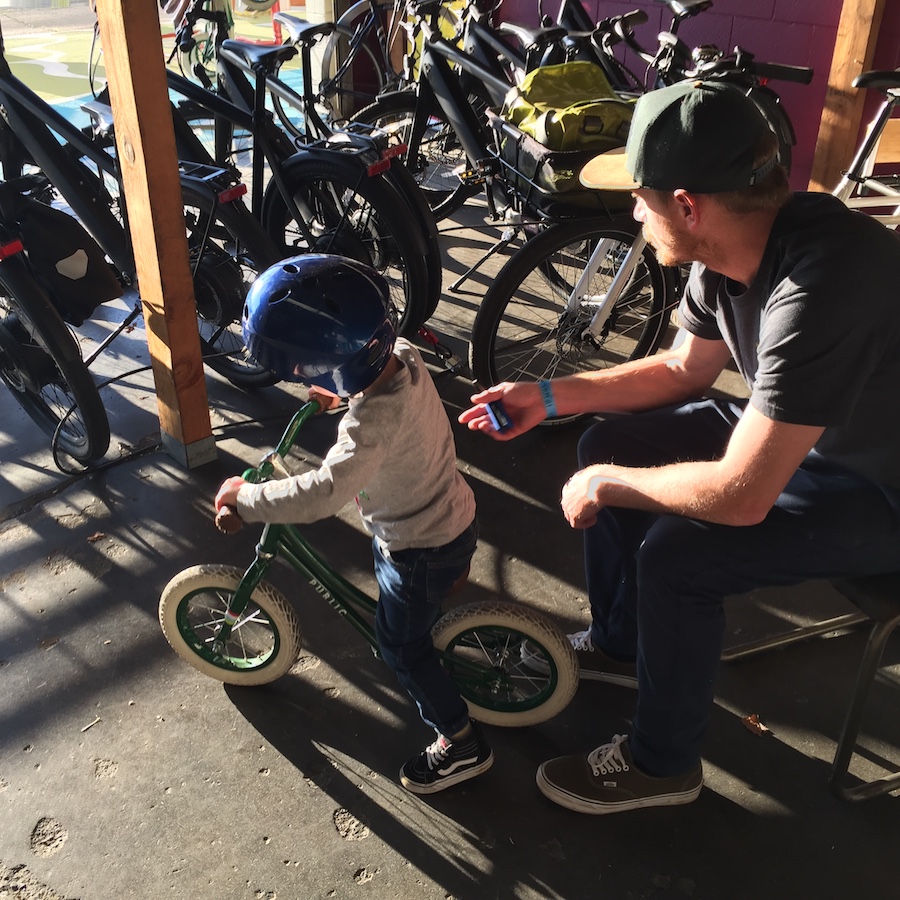
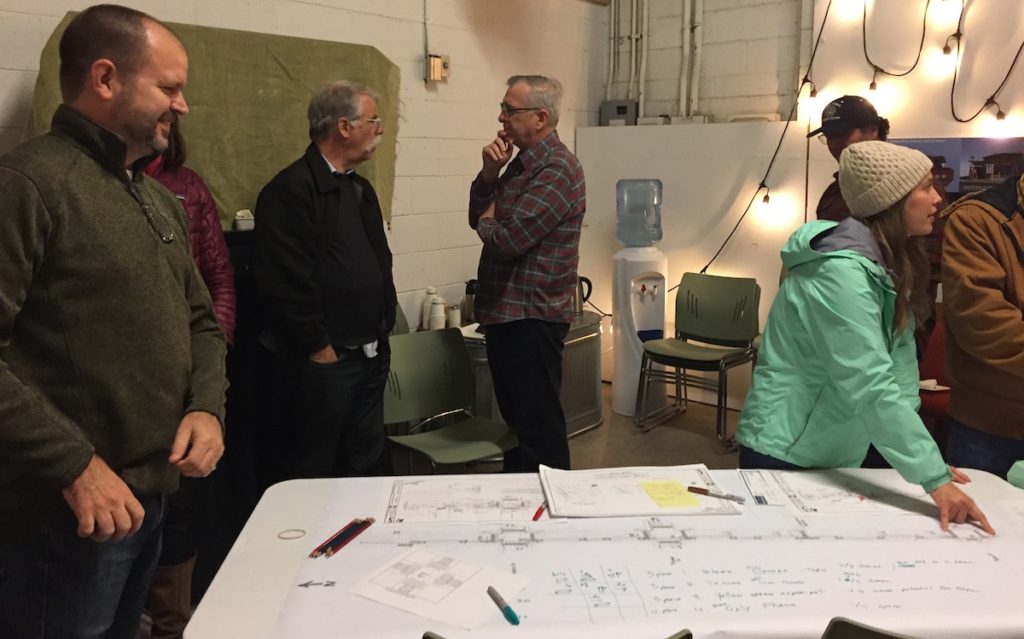
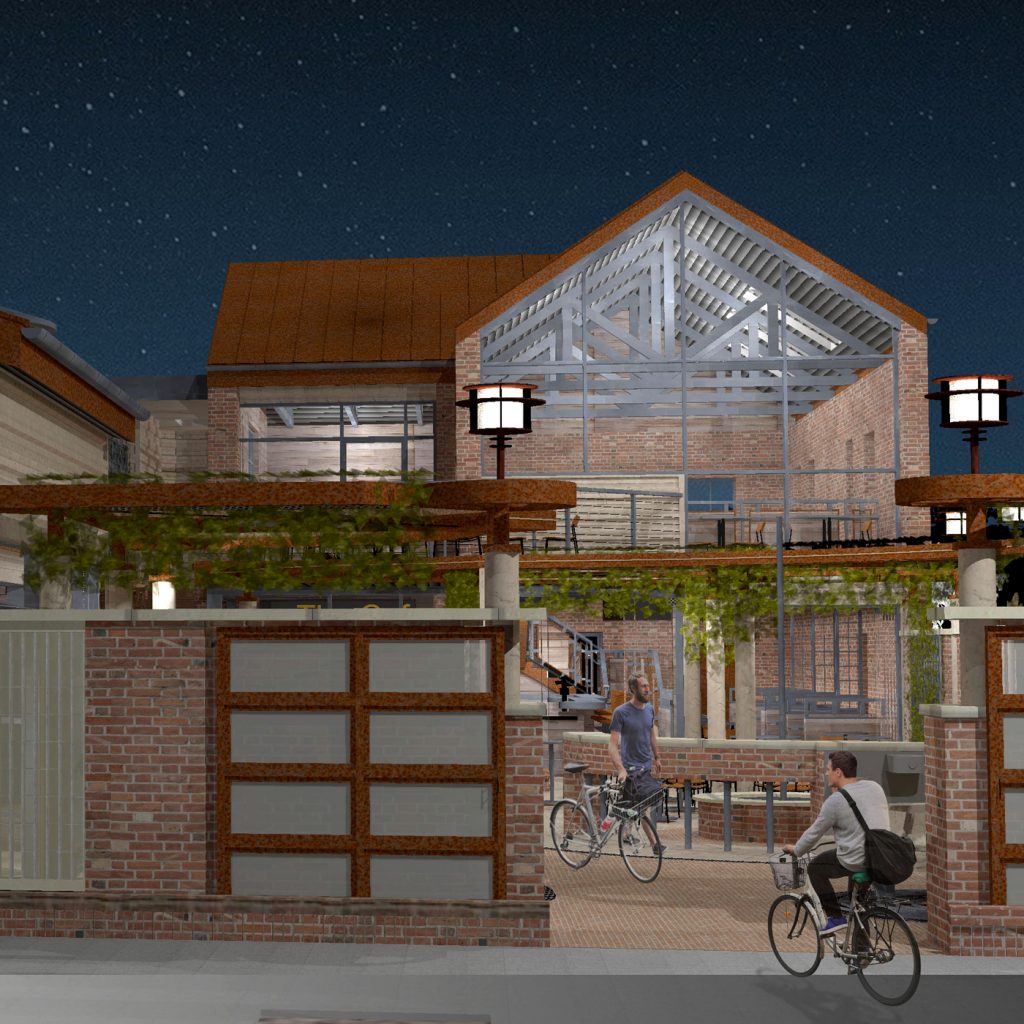
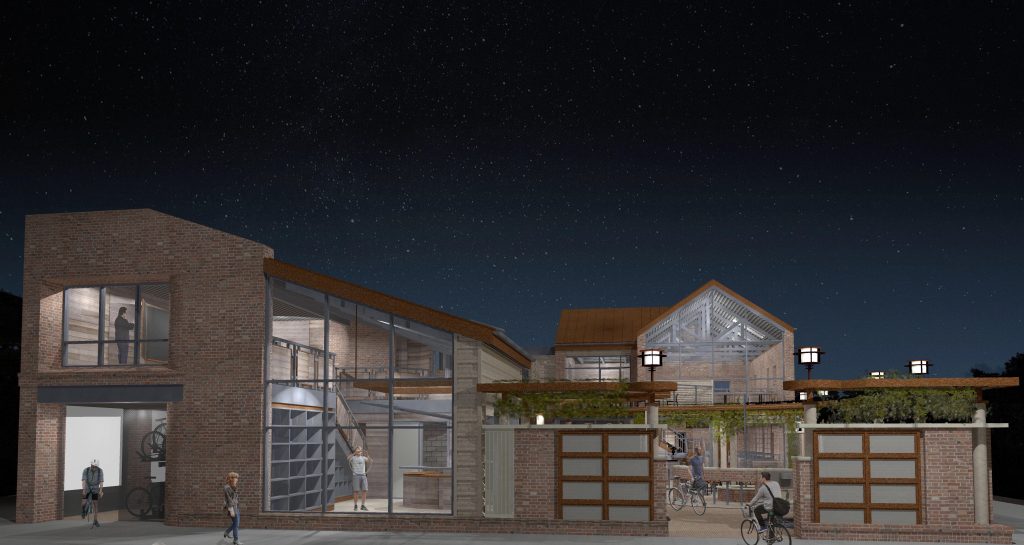
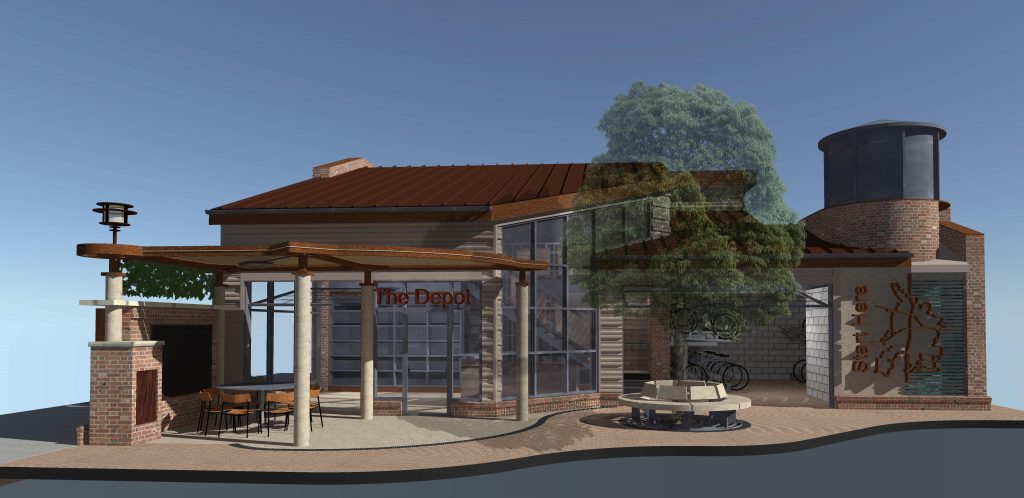
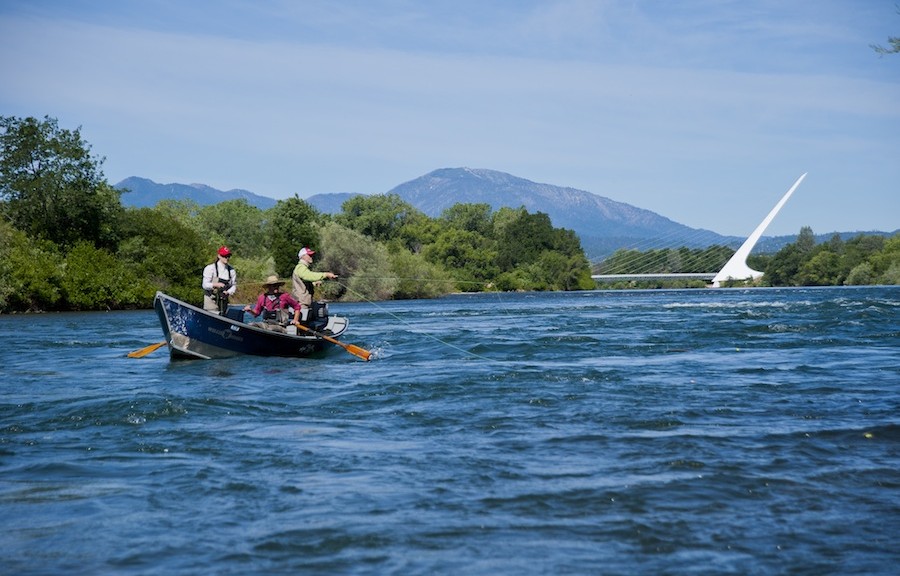
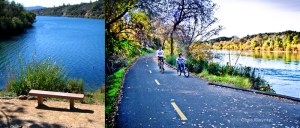

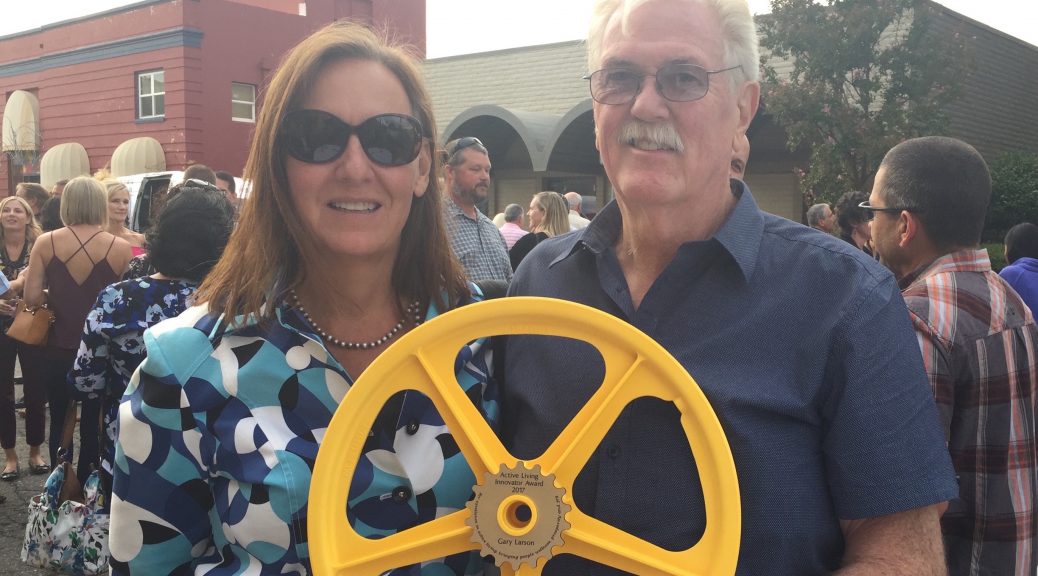
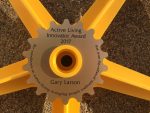 What is that golden trophy? It’s a Skyway TUFF Wheel! The first-of-it’s-kind wheel was developed by Chuck Raudman and manufactured by Skyway in Redding starting in 1976.
What is that golden trophy? It’s a Skyway TUFF Wheel! The first-of-it’s-kind wheel was developed by Chuck Raudman and manufactured by Skyway in Redding starting in 1976.